2022 ANNUAL REPORT



The long-term survival of wildlife and habitats in South Luangwa under the custodianship of the Zambian people.
To work with community and conservation partners in the protection of the wildlife and habitats of the South Luangwa ecosystem.
Since 2003, Conservation South Luangwa (CSL) has worked in partnership with Zambia’s Department of National Parks and Wildlife (DNPW) on the frontline of wildlife conservation and human-wildlife conflict mitigation in the South Luangwa Valley. CSL works to protect the 1,400,000 hectares of largely intact wilderness in eastern Zambia that make up the South Luangwa National Park and the surrounding Upper and Lower Lupande game management areas.
CSL practices a multi-faceted approach to wildlife resource management and protection, working in collaboration with DNPW to implement counter trafficking measures including anti-poaching foot patrols, aerial surveillance, sniffer dog detection, and tracking work, as well as direct community engagement with people living alongside the wildlife of the South Luangwa Valley.
The South Luangwa National Park marks the end of the Great Rift Valley along the banks of the Luangwa River as it makes its 800 km journey to meet the great Zambezi River before moving east into Mozambique.
The South Luangwa Valley is renowned for its diverse wildlife, supporting over 60 species of mammals and 450 species of birds. Species include the unique Crawshay’s zebra, Cookson’s wildebeest and a geographically isolated population of Luangwa giraffe (G. t. thornicrofti), a subspecies of Masai giraffe. The Valley is known for its high densities of lion, leopard and wild dog, and it remains a stronghold for elephants in Zambia.

As I sit and try to find the words to reflect on and sum up 2022, I wonder what the best measure of our success is. Is it the number of anti-poaching patrols deployed, wildlife population numbers, human-wildlife conflict mitigations implemented, or our fundraising efforts? While all of these are definitely a measure of the level of our success or in some cases our letdowns, I think for CSL, the real gauge is people - their effort, passion, attitude and commitment. Our team continues to thrive and develop and have real impact, often in challenging circumstances. They are the heart of CSL and what makes it work.
Throughout 2022, we continued to give our full support to Zambia’s Department of National Parks and Wildlife (DNPW) in our joint effort to improve conservation in South Luangwa while immersing ourselves deeper into the challenges local communities experience living alongside wildlife.
Given the sheer size of the protected area, limited Government resources available, and a flourishing tourism sector with a rapidly increasing human population and subsequent conflict between wildlife and people, South Luangwa faces unique burdens. Despite this, we still find a way to have meaningful impact by prioritising our work carefully and closely collaborating with partners for maximum impact. I hope you enjoy all the detailed descriptions of our work and results in this report.
Looking forward, we are excited, if not a little surprised, that 2023 marks CSL’s 20th anniversary and celebrates two decades of conservation achievements. We are extremely proud to be DNPW’s longest-serving conservation partner in South Luangwa and look forward to sharing our celebratory plans with you in the near future.

Thank you to the CSL Board who work behind the scenes to support us. We were delighted to welcome Shadrack Nkhoma as our newest Board member this year. Shadrack, or ‘Shaddy’ as he is better known, has risen through the ranks to become Senior Guide and Logistics Manager for Time + Tide. We look forward to his unique insights into the challenges of protecting the wildlife of this special corner of Zambia.
Thank you also to our donors who keep giving, even though they have already given so much, and to our friends and partners for their ongoing partnership.
Times are changing - population growth, rural poverty and climate change are all threats to our biodiversity. I am particularly proud to see CSL reacting to that change and embracing a principle of collaboration with other conservation organisations.


In our primary role of conservation law enforcement, our three teams (anti-poaching, K9 dog unit and aerial surveillance) are working ever more closely with DNPW and collaborating with Wildlife Crime Prevention (WCP Zambia) is very effective.
Outside of South Luangwa National Park, our single biggest threat is habitat loss. CSL is working with a number of other biodiversity and forestry organisations in an effort to minimise deforestation. The encroachment of people into the Luangwa Valley and the subsequent habitat degradation by clearing virgin woodland for farming and the threat of carnivore conflict with their livestock is a worrying trend; CSL works closely with the Zambian Carnivore Programme (ZCP) to mitigate that threat.
As you will see from this report, our Community team continues to develop wideranging human-wildlife coexistence projects and alternative livelihood initiatives. CSL links its community programmes with local partnersChipembele Wildlife Education Trust and Project Luangwa - creating the conservation leaders of the future.
I hope the successes shared in this report continue to inspire you.




198 firearms confiscated 125 poachers’ camps dismantled 265 wire snares recovered
wildlife crime suspects arrested
OVER 1,000 domestic animals treated
12 animals successfully de-snared
ZERO reports of snared lion since July 2021
849

domestic dogs and cats vaccinated against rabies

576 COMMUNITY
farming households supported 1,311 elephant-safe grain stores constructed 19
Community Game Drives for 1,003 participants 134
NINE km TWO km
900
62 domestic dogs, cats and rabbits sterilised
OF CONFLICT MITIGATION ‘SMELLY FENCE’ TRIAL
human-wildlife conflict incidents assessed which affected 1,426 people
28hrs of The Conservation Hour radio show reaching 50,000 listeners

3.3 TONNES of chillies harvested by 109 farmers
30 chilli patrollers working in four chiefdoms
OF CONFLICT MITIGATION SOLAR FENCING
Overall, 2022 has been a challenging year for law enforcement in South Luangwa. While the recovery from the Covid-19 pandemic has brought much-needed tourism back to the area, improving both the local economy and deterrence to would-be poachers in more remote sectors, we have also seen an overall reduction in capacity compared with 2021. Despite this, we have continued to see excellent results from our on-the-ground, K9 and aerial units in the fight against poaching in South Luangwa. This demonstrates the continued importance of CSL and DNPW’s partnership as well as support from our dedicated donors.
In South Luangwa, CSL achieved the following results compared with 2021:
• 8% increase in day patrols
• 47% decrease in five-day patrols

• 34% decrease in 10-day patrols
• 47% increase in firearms confiscated
• 94% increase in bushmeat seized
• 32% decrease in snares recovered
• 16% decrease in ivory recovered
• 47% increase in arrests of wildlife crime suspects
• 153% increase in helicopter patrols



In 2022, we saw a renewed focus for both CSL scouts and DNPW rangers in South Luangwa, with significant resources directed to intensive refresher training for over 100 scouts and the creation of an integrated anti-poaching unit, the Target Team. This elite unit consists of highly trained scouts from specialised teams – CSL’s K9 Detection Dog Unit and Quick Reaction Force (QRF) as well as DNPW Intelligence and Investigations Unit (IIU). Together, this specialised team is working to improve strategic operations to apprehend suspects of wildlife crime before crimes are committed and wildlife is illegally killed. Thank you to Frontier Collective for creating this new team and to the U.S. Department of State Bureau of International Narcotics and Law Enforcement Affairs (INL) for funding the training programme.
Throughout the year, and in partnership with DNPW, anti-poaching foot patrol teams covered 43,312 km to find and deter illegal
activity in South Luangwa National Park and the surrounding Upper and Lower Lupande game management areas. Patrol teams conducted 17,243 field days, 425-day patrols, 382 10-day patrols and 25 five-day patrols. During their patrols, 432 snares were recovered. In addition, 97 firearms, 61 pieces of bushmeat weighing 827 kg and 103 pieces of ivory weighing 488 kg were confiscated. The on-the-ground anti-poaching team apprehended 161 wildlife crime suspects.

Alongside CSL’s anti-poaching ground patrols are community clean sweeps which consist of five or six community members headed up by a DNPW Wildlife Police Officer and CSL scout. In 2022, 102 community clean sweeps resulted in the removal of 144 snares. In total, 576 snares were recovered.

Support from INL and the U.S. Fish and Wildlife Service has enabled CSL to purchase two additional land cruisers and one boat. The new vehicles will assist with rapid responses to poaching activity. The boat will increase our capacity to move patrols around the park and attend to other duties during the wet season, including human-wildlife conflict mitigation and assessments. During the rainy season, many roads become inaccessible and our ability to continue working depends on boats.
Our scouts are on the frontline of conserving the wildlife and habitats of South Luangwa, and a quality pair of boots is essential for their daily work. In 2022, scouts received 90 pairs of boots donated by Jim Green Footwear and Game Rangers Association of Africa.

I have pledged and dedicated my whole life to the protection of nature. Conservation isn’t just about boots on the ground. We are working with communities and conservation partners in the protection of the wildlife and habitats of the South Luangwa ecosystem. Even though things are tough, we are doing the very best we can.

On a personal note, I am pleased to be elected as Southern Africa representative for Game Rangers Association of Africa. My role will involve helping to advance the ranger profession, ensuring greater equality, improving employment conditions and welfare, as well as developing community relations. During September, I also attended the second annual African Ranger Congress in Botswana. Over 90 rangers from 12 countries participated. It was a great opportunity to build morale, network and celebrate ranger achievements.



Throughout 2022, the K9 Detection Dog Unit focused significantly on capacity building. Two senior K9 handlers, Sydney Njobvu and Christopher Mwamba, spent three months in the USA with the Indiana K9 Sarge Memorial School under the Indiana Department of Natural Resources Law Enforcement Division K9 Section. This was fully sponsored by our partners Working Dogs for Conservation. The team also participated in training for the new Target Team.
In addition, we were privileged to host a visit from Pete Coppolillo, Executive Director of Working Dogs for Conservation (WD4C); Lauren Wendt, Law Enforcement Training Lead for WD4C; Dr Cindy Otto, Executive Director at the Penn Vet Working Dog Center; Dr Bess Pierce, Teaching Professor at the University of Missouri and Dr Neil Anderson, Veterinary Lecturer at the University of Edinburgh. This combined team assessed the CSL dogs’ health and welfare and conducted specialised body and strength training for the working dogs. The team learnt a lot from these exceptional experts in the working dogs field.
Sadly, the team suffered a significant blow in March with the loss of beloved working dog, Chai (centre). However, since June, the team have been kept on their toes with the boundless energy of the newest recruit, Gene (above), who joined Earl (left), Tygee and Rudi, our three other working dogs. Before Gene arrived, we renovated the kennels to secure them as
much as possible to keep out tsetse flies so that the dogs are protected from them whilst they are not working.

During 2022, the team conducted 198 operations. These operations included 28 checks along the Zambia-Malawi-Mozambique border and the establishment of 124 roadblocks on known trafficking routes. At border checkpoints and roadblocks, 25,975 vehicles were searched (11,631 motor vehicles, 6,625 motorbikes and 7,719 Across Zambia’s Eastern Province, there were also 19 intelligence-led building searches.
In South Luangwa, under the management of CSL, K9 operations resulted in the confiscation of 10 firearms, one piece of bushmeat weighing 71 kg and two pieces of ivory weighing 46 kg. There were four arrests.
In Chipata, under the management of DNPW, K9 Unit operations resulted in the confiscation of 18 firearms, 93 kg bushmeat and zero ivory. There were 33 arrests.

The K9 Unit’s operations also resulted in the seizure of animal parts, including one python skin, five pangolin bones and 173 pangolin scales. Two live pangolins and one vervet monkey were recovered and released safely into South Luangwa National Park.
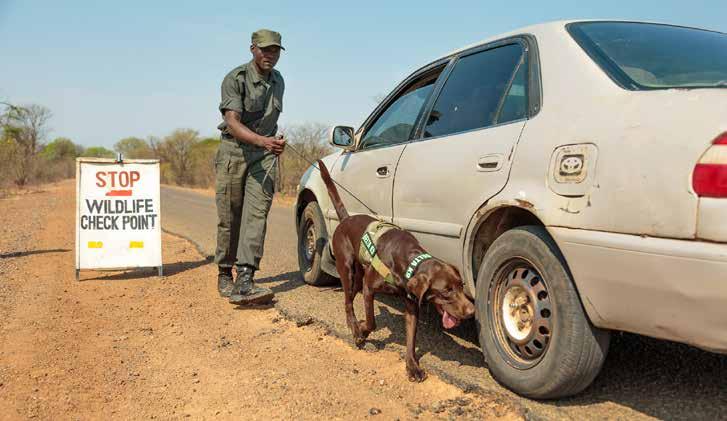




The secret of our success is determined by our daily agenda and how we work together as a team. Our K9 Detection Dog Unit, which has four dogs and nine handlers, successfully achieved its goals in 2022 due to teamwork, coordination and passion for the work. The dogs equally performed extremely well and for me, as the Head of K9 Unit, I am really impressed with the performance of the team and the dogs at large. Our main objective is to combat poaching through our different techniques, such as sniffer dog detection, known to be one of the most effective approaches to combating illegal wildlife activities. We are a 24/7 working team and we don’t hesitate to act on a reported incident as our goal is to have zero tolerance for poaching. We shall continue conserving nature for the benefit of current and future generations.
The canine school course was a great opportunity to learn from experienced canine trainers and instructors. I learnt a lot from the canine centres and conferences I attended too. It was my first graduation with a large audience. Being out of my normal residence for three months also allowed me to experience many new things not directly related to working dogs, including a baseball game, the White House, plenty of fast food and many people from different backgrounds and cultures. Travel has certainly broadened my outlook on life.
I am grateful to CSL for giving me the opportunity, and I appreciate the support of Working Dogs for Conservation.


The Aerial Unit remains a vital component in our approach to wildlife protection, providing crucial support to CSL and DNPW’s anti-poaching work. In 2022, the Aerial Unit conducted 115 surveillance patrols in the light aircraft and 76 helicopter operations, equating 353 hours of aerial support. This work resulted in the detection of elephant, hippo, buffalo and giraffe carcasses, unrecovered ivory, poachers’ camps, illegal incidences of fishing and deforestation, as well as poachers observed in action.
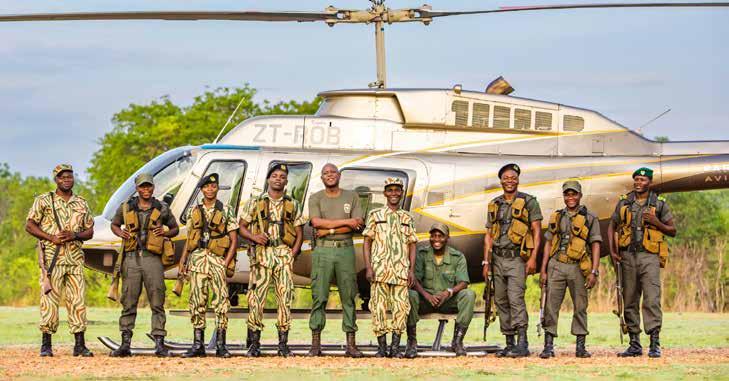
Alongside law enforcement and deterrent responsibilities, the Aerial Unit collects observational data on wildlife populations. This data helps to support DNPW’s overall management of the protected area. Throughout the year, the team recorded over 300
bull elephants, 200 large herds of buffalo (greater than 100), 199 giraffe, 150 ground hornbills and over 100 large bird nests.
Furthermore, the Aerial Unit reacts promptly to emerging developments in other departments and partner organisations on the ground in Zambia. The number of veterinary operations were made infinitely more time efficient and sometimes only possible by the ability to reach remote areas quickly by air. These operations ranged from darting and collaring wild dogs in North Luangwa National Park with partners North Luangwa Conservation Programme (NLCP) and ZCP, darting and desnaring a cheetah in the Bangweulu Wetlands with African Parks, to supporting the successful relocation of a rhino into North Luangwa National Park with NLCP and DNPW.
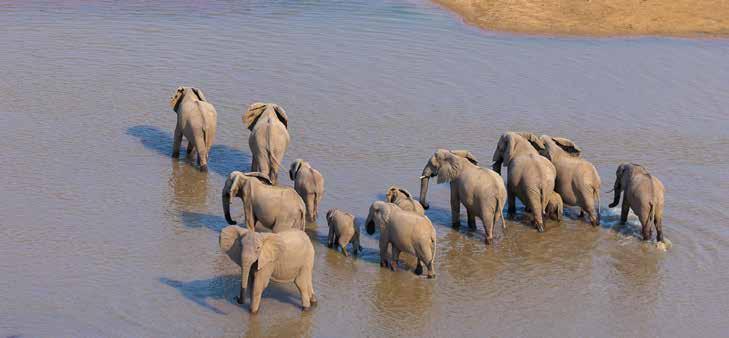

The beginning of 2022 saw a seamless transition from one pilot to the next, due mostly to the incredible foundation built by outgoing pilot, Les Dillard, as well as the rock- solid CSL/DNPW aviation team that he left behind. The remainder of the year saw the continuation of regular operations with the introduction of a few new objectives and advancements.
Looking back on last year and the result of approximately one thousand sightings of the more notable species in the park, we realise the unique opportunity we have to conduct ecological monitoring as a secondary objective after regular law enforcement work. A few extra points and notes a day really does add up when you spend hundreds of hours in the air above the park!
Towards the end of the year, we combined a few technological advancements with collaborations between organisations that resulted in more efficient aerial surveillance and operations. This is the angle that we will focus on in 2023.



...AN INCREASE OF 50% SINCE 2021
THREE ELEPHANT ONE WILD DOG TWO GIRAFFE ONE HYENA ONE BUFFALO TWO PUKU ONE IMPALA ONE ZEBRA
Our wildlife rescue team ensures our capacity to mobilise veterinary care quickly to snared or injured animals. In partnership with ZCP and DNPW veterinarian Dr Lengwe Bwalya, our in-house veterinarian Dr Mwamba Sichande and our very experienced CSL rescue team successfully conducted 12 desnaring operations in 2022 and two additional wildlife rescues on an elephant calf and bushbuck.

We are relieved to have had no reports of snared lions in 2022. This is a huge improvement from the early years when we would typically de-snare five lions per year.
As expected, very few snared animals were reported during Zambia’s wet season. This is largely due to the difficulties in
snaring during the rains as animals disperse and no longer congregate around diminishing water sources. We also tend to see a reduction in snaring during key farming seasons while most people are busy planting or harvesting their crops. With rains continuing until late April, we had no de-snaring operations until May and as the dry season approached, these numbers increased significantly. As the bush dries out and visibility improves, snared animals are easier to identify and areas of the park and GMAs become accessible to poachers. In addition, it is a time when farming becomes challenging due to the extreme heat and as a result, communities are more likely to resort to illegally harvesting bushmeat to subsidise their household income.


It brings a great sense of fulfilment knowing that every animal we rescue would have died without our effort. CSL’s interaction with the community has also developed through our veterinary outreach programme. Over the years, I have witnessed a change in attitude towards animals by members of the community. People understand that an animal can be treated when it’s sick and I now see all kinds of animals in the clinic, such as dogs, cats, chickens and rabbits.
I have also seen more interest in young people wanting to pursue veterinary medicine as a career as well as a gradual upgrade of my clinic. When I started the neuter-spay programme in 2013, I was boiling surgical instruments in a pot but we now have equipment such as an autoclave so we can do many more things now.
Throughout the year, Dr Sichande and his team performed regular veterinary work at the community veterinary clinic in Mfuwe and through community outreach campaigns in areas surrounding the South Luangwa National Park. The team sterilised 28 dogs and two cats during 21 community outreach visits. At the veterinary clinic, 18 dogs, 10 cats and four rabbits were sterilised. In addition, 849 dogs and cats were vaccinated against rabies (an increase of 157% compared with 2021), and 102 other animals received treatment for various conditions. The veterinary team was supported by ZCP, Jonathan Zulu from the CSL K9 Detection Dog Unit, veterinary students Mercy Njobvu and Cornellius Phiri from

the University of Zambia, and veterinary officers Winter Hanamwanza, Gloria Mulenga and Petronella Mwansa from Zambia’s Ministry of Livestock and Fisheries in Mambwe District.
Dr Sichande’s work continues to be recognised across Zambia and beyond. Throughout 2022, he represented CSL/ ZCP in Malawi for World Spay Day, was invited by African Parks to assist with a cheetah de-snaring in the Bangweulu Wetlands, attended a WCP workshop in Chipata on pangolin conservation as well as presented on the chemical immobilisation of wild dogs at the Veterinary Association of Zambia’s Scientific Conference and Annual General Meeting.
I am grateful for CSL’s programme to vaccinate and neuter dogs in villages. It has brought veterinary services closer to the people as most people cannot afford to take their dogs to the clinic. I didn’t know it was possible to neuter female dogs. In the villages, only male dogs are neutered without sedation. The wounds can take a long time to heal as they often get infected. When CSL’s veterinary team neuter the dogs, they heal within 10 days. The dogs in the community are now looking healthy.

Over the last 15 years, CSL has worked closely with many community groups to implement human-wildlife coexistence projects, develop alternative livelihood initiatives, broaden community outreach programmes and collect HWC data to inform our mitigation efforts. CSL’s programmes reach an estimated population of 100,000 across seven rural chiefdoms bordering the South Luangwa National Park. The CSL Community team continued working hand-inhand with communities to mitigate conflict experienced as a result of living alongside a diverse range of wildlife across a vast expanse of wilderness.





In 2022, the team assessed a total of 900 incidents of humanwildlife conflict (HWC) across seven chiefdoms, of which 62% was crop damage (primarily by elephants), 22% livestock predation (mostly by lions), 12% property damage and 4% incidents resulted in human injury/death. The loss or damage to crops, property and livestock totalled an estimated ZMW 835,000 (US$49,000), demonstrating the direct financial challenges of human-wildlife coexistence. To support these communities, the Community team achieved the following in 2022:

• The new HWC Rapid Response Unit (launched in October 2021) provided 24/7 response to reports of HWC throughout the year. They received 818 calls on the HWC hotline number and responded to 283 serious incidences of HWC.
• 30 chilli patrollers in four chiefdoms supported 1,311 farming households to protect their crops.
• 14.4 km of HWC mitigation fencing installed across two key conflict chiefdoms, including solar fencing and the new ‘smelly fence’ trial.
• 2 km of farming block watch towers constructed in Kakumbi Chiefdom.
• Several new mitigation trials were initiated throughout the year, such as varied solar lighting for elephant deterrence and growing ‘smelly fence’ vegetable gardens, replacing garlic with onion.
• 19 new elephant-safe grain stores constructed, bringing the total to 185.
• In July and August, a student intern, Meya Sakala, monitored and mapped all elephant-safe grain stores.
• In September, CSL carried out a field visit to Chifunda in North Luangwa for a HWC workshop. This was held in partnership with the Frankfurt Zoological Society and COMACO, a social enterprise that supports wildlife conservation and small-scale farmers in Zambia. The workshop was a valuable opportunity to discuss successful HWC case studies. To help manage and reduce human-wildlife conflict, the team shared knowledge on how to implement measures, tools and techniques specific to different conflict species.
• Thanks to the Elephant Crisis Fund, CSL received funding in November for a fiberglass canoe. Canoes help many people, including chilli patrollers, with safe river crossings.
I have been crossing River Lupande since childhood. The introduction of a boat has brought relief to communities from Nsefu, Kakumbi and Mwanya chiefdoms. Incidences of injury and death as a result of conflict with crocodiles has reduced. The boat also provides us with transport so that we can purchase basic needs and get our children to school, particularly when the river floods.
‘ADEBAYO’ PHIRI MAZIKIRA VILLAGE, NSEFU CHIEFDOM




I’ve been a farmer for over 40 years in Chiwowo farming block. I grow maize, groundnuts, soya beans, sunflower and cotton. Previously, elephants were damaging my crops and sometimes I would lose threequarters of my field in one season. Since CSL came in, we have tried chilli bombing, chilli burning, beating drums, watch towers and a smelly fence. Out of all these, I recommend the smelly fence because ever since we installed the fence in December 2021, the elephants have not been entering our farming block to damage my crops.
 BILLY BANDA HWC RRU COMMUNITY CO-ORDINATOR
BILLY BANDA HWC RRU COMMUNITY CO-ORDINATOR
Joining the Rapid Response Unit (RRU) team this year was an interesting new challenge. There are now seven of us in the team. There were some challenges early on when there were just rangers in the team because people saw them and only thought of law enforcement and arrests for wildlife crimes. By joining the RRU team, I can bring the community close to us so they no longer shout insults or run away when we are trying to help. Now there is good collaboration. We cover seven chiefdoms and every working day is different. RRU has helped the community understand that at CSL, we don’t only love wildlife, but we also care for people.


In rural areas where formal employment is scarce, the majority of households rely on subsistence farming and natural resources for their household income. Farming, fishing and hunting often result in wildlife conflict due to crop damage and attacks on livestock. Wildlife conflict can also lead to injury or death to farmers as they try to scare the elephants away.
Over the last 13 years, CSL has worked with farmers to plant and harvest alternative crops. These crops provide additional household income and support human-wildlife coexistence approaches by deterring elephants from damaging crops, thereby conflict with farmers. In 2022, we achieved the following:
• CSL’s long-running chilli farming project continued, with 109 farmers participating to grow chilli crops for direct sale as well as mitigation measures (chilli bombers and smelly fences). The number of farmers participating in the project increased by 25% compared with 2021. A total of 3.3 tonnes of chilli were harvested between June and August, generating an income of ZMW 66,950 to farmers in five chiefdoms.
• In June, the Community team bought 94 kg of turmeric from nine local farmers to help with school fees and household expenses. This turmeric will be used to establish two cooperative livelihood projects in 2023.




While 2021 was about growth for the community human-wildlife coexistence team, 2022 was all about collaboration - promoting, building, and sustaining relationships with communities and organisations in South Luangwa. We have seen some success in reducing elephant conflicts using different mitigations, though the area we need to cover is vast and the situation is continually evolving. I am most proud of the quarterly meetings which bring together DNPW, community resource boards, traditional leadership representatives, elected members of local government and other conservation nonprofits and companies. In these meetings, discussions are taking place to help find long-term solutions for improved human-wildlife coexistence.

When I look back and see how far we’ve come in a year, our seemingly slow pace of progress is replaced with a sense of accomplishment and hope for 2023. Our committed team will continue to lobby for a land-use plan to help protect wildlife corridors whilst implementing data-driven solutions in partnership with communities to reduce the burden they face living alongside wildlife.
EMMA ROBINSON HWC PROGRAMME MANAGER

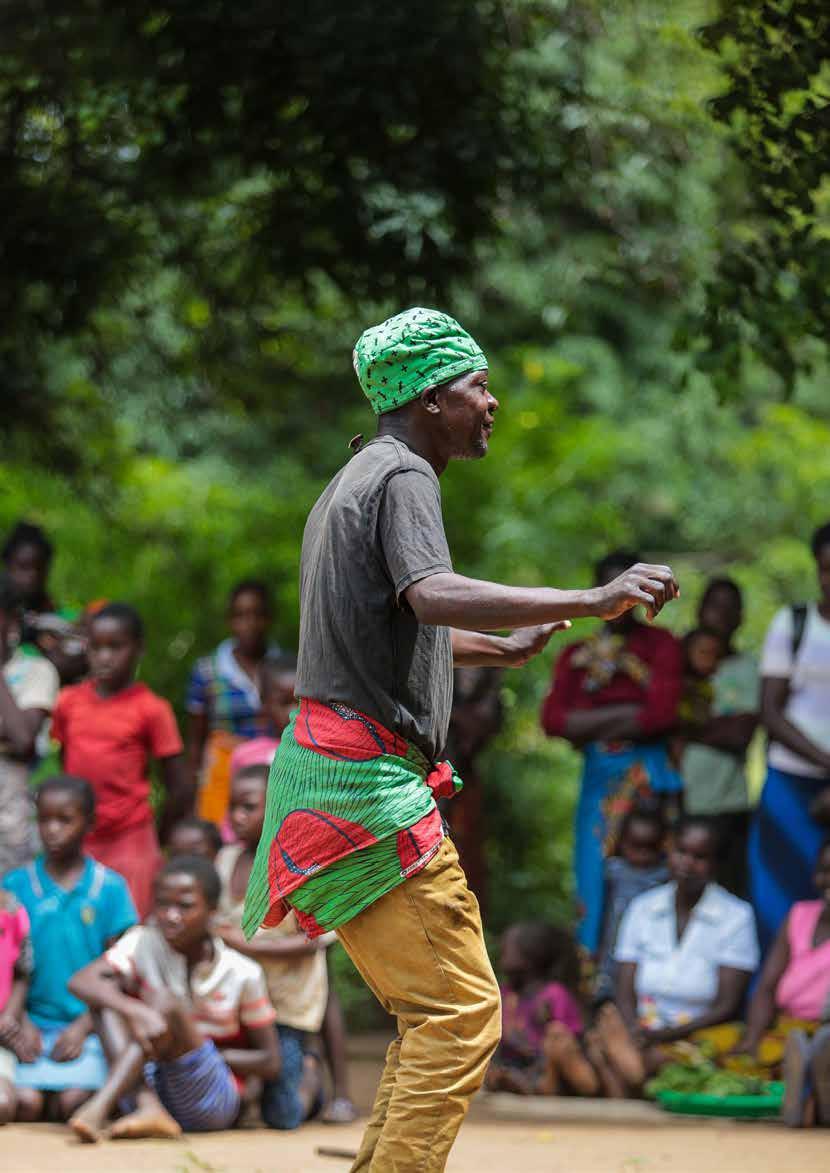
The Community team worked hard to engage community members in wildlife coexistence activities alongside the human-wildlife conflict mitigation initiatives. The community education and engagement work is a vital component of CSL’s holistic approach to wildlife conservation and protected area management. In 2022, the team achieved the following:
• 22 hours of the Conservation Hour radio show, broadcast to an estimated audience of over 50,000. This included a joint monthly show with DNPW, ZCP and Chipembele Wildlife Education Trust (CWET).

• Six hours of dedicated radio broadcasts specific to promoting and discussing the new HWC Rapid Response Unit.
• 54 conservation performances by the SEKA theatre group, reaching an audience of 12,662. Compared with 2021, this is an increase of 116% in the number of performances and a 341% increase in the number of people engaged.
• Eight days of participation in public shows, including school science fairs, a regional agricultural show and local traditional ceremonies.
• 134 Community Game Drives took 1,003 community members into the park with 64% never having experienced a game drive before. We are particularly grateful to Africa Hope Fund for supporting this initiative.

• In November, community leaders from Nsumbu met with ZCP and CSL in South Luangwa to discuss the challenges and benefits of an ecosystem with lions. Frackson Sakala, Senior HWC Field Officer, attended the meetings on behalf of CSL.
• In November, CSL held a joint HWC coexistence campaign with CWET and ZCP. This was attended by the traditional leader, Chief Kakumbi, as well as DNPW and BCP. The campaign included a song competition.
This year, there were more than double the Seka performances than there were in 2021. As a result, we discussed how to safely prevent and reduce wildlife conflicts with a much bigger audience. In 2023, we will develop our community awareness initiatives, particularly as the number of human injuries caused by wildlife conflict increased this year.
RUTHAs a radio champion, I have seen how much the community in Mfuwe, and the Mambwe district at large, value the radio shows. They help communities understand the importance of conserving biodiversity. Radio is a good tool for delivering information quickly. The programme started with just a few listeners but now there are thousands of people listening to the weekly radio shows. Thank you CSL and its partners for coming up with this great initiative.





Technology continues to evolve for the benefit of conservation. Our Law Enforcement and Community teams use Spatial Monitoring and Reporting Tool (SMART), an evidence-based data collection and reporting system, to effectively monitor and protect wildlife in the Luangwa Valley.


Law Enforcement uses SMART to record the data of patrol efforts, patrol outcomes (number of arrests, snares removed and guns confiscated), illegal wildlife activities (poaching and setting snares), as well as signs, behaviours and locations of key wildlife populations. SMART is also widely used by Community teams to understand community attitudes and tolerance towards wildlife and to record where human-wildlife conflict and associated mortality events are most likely to occur.
In 2022, we conducted and achieved the following:
• In October, Kaluba Tembo, SMART Co-ordinator; Emma Robinson, HWC Programme Manager, and Edinah Ngambi, DNPW SMART Manager, attended an advanced data management training workshop in Kafue. This was the first regional advanced training course that brought together SMART users from Zambia, Zimbabwe, and Namibia. Given the time CSL has successfully used SMART to collect HWC data, Emma was invited to present how the data is used to inform HWC projects. Our thanks go to Panthera and North Carolina Zoo for supporting us with this technology.
• In November, Kaluba, and our pilot, Gareth Broekhuizen, attended the EarthRanger User Conference in Naivasha, Kenya, alongside over 300 people from conservation organisations worldwide. The Conference was a rare opportunity for the people behind the tech to come together and build lasting relationships.
• CSL, BCP and DNPW conducted SMART data manager training in December. This training improved understanding of SMART data management and familiarised users with the new features in SMART 7.
• Expanded our HWC data collection capacity from nine to 13 individuals working across six chiefdoms.
• Two training sessions were held with HWC field officers on collecting and recording data.
• Partnered and shared HWC data with Makolekole Drilling and Foundation, a non-profit organisation meeting the challenge to bring clean, safe water to the villages and schools of the Luangwa Valley.

On 17 September 2022, 94 ranger teams from 21 countries across Africa united to compete in a half marathon (21 km) carrying their typical 22 kg backpack and equipment to raise money to support the men and women on the frontline of Africa’s protected areas. The sense of community and comradeship demonstrated by the many rangers from across Africa participating in the Wildlife Ranger Challenge has created a united front for wildlife and the people who live and work to protect it.
CSL entered two teams into the race. Our Astikana (women) team came second out of the female teams who participated in the event. They completed the Challenge in two hours and 23 minutes.
In the build-up to the Challenge, CSL also participated in a twominute push-up challenge on 30 August and a two-minute sit-up challenge on 5 September. For the sit-up challenge, both our ranger teams completed 539 sit-ups. Our Astikana team managed 236 sit-
ups and our Azibambo (men) team were able to do 303 sit-ups. We look forward to participating in the 2023 Wildlife Ranger Challenge when we hope to beat our records!

We are thrilled to have raised an incredible US$300,000 for scout salaries and anti-poaching patrols. A huge thank you to all our supporters for their donations. In particular, we would like to thank Mfuwe Lodge and The Bushcamp Company for their significant fundraising efforts, as well as Zoo Atlanta, the Deepak Raghaven Family Foundation, EJF Philanthropies, Susan Stribling and Mulberry Mongoose for their donations. We would also like to thank the Sheinberg Relief Fund for their matched funds.
As ever, a special thanks also goes to the driver of this initiative, our valued donor and partner, Tusk. These vital funds have significantly contributed to CSL’s growth and we are indebted to their support.

Tusk organised an all-star team to participate in the Wildlife Ranger Challenge at the African Ranger Congress in Kasana, Botswana. The team comprised the four fastest rangers who have participated in the Wildlife Ranger Challenge since its inception in 2020. This elite team included our very own Clifford Sakala.



The threats facing wildlife and the natural world are only growing. As well as poaching, these days we also have to improve human-wildlife coexistence while at the same time address the impact of climate change and population growth on land use. As rangers, we are working more than ever to protect Africa’s wildlife. To ensure we continue securing a future for Africa’s wildlife, we need greater support as we not only rebuild post-pandemic but develop and expand our impact.
BENSON KANYEMBO LAW ENFORCEMENT ADVISOR AND 2019 TUSK WILDLIFE RANGER AWARD WINNERIn January, field officers Frackson Sakala and Mwila Ng’andu, as well as Ruth Chitindi, SMART Database Manager, travelled to Lusaka for a 14-day Women’s Leadership and Empowerment training course. The programme was organised by Integrated Land and Resources Governance (ILRG). The training covered how to encourage and increase women participation in managing our natural resources.
Men and women use natural resources in different ways. However, there is a huge gender gap in natural resource management largely due to cultural and social norms, and a lack of understanding by women about the role of the Community Resource Board and the Community Forest Management Group. It is my belief that when there is equal gender representation in decision making, we will see better management of our natural resources and improved governance that will benefit everyone. I learnt skills on the course on how to empower rural women and motivate them to participate that can be integrated with our daily coexistence work.


The Tusk symposiums are undoubtedly the most beneficial, honest, and real gatherings about conservation I have had the privilege of attending. They open our eyes to different ways of conservation and challenges in Africa, which offers growth to us all.

In March, CEO Rachel McRobb and Law Enforcement Advisor, Benson Kanyembo, attended the Tusk Conservation Symposium in the Masai Mara National Reserve in Kenya. More than 60 delegates from 16 African countries came together for four days to share their knowledge and expertise to collaborate around the theme ‘Building Resilience in Conservation.’ There were workshops on Strategic Collaboration, Leading Resilient Organisations, Communicating for Impact, Diversifying and Strengthening Funding as well as Creating Opportunity from Crisis. It was an inspiring few days with incredible people that forced us to think outside the box with conservation.
In July, CSL participated in the Tangila Trail Series in Mkushi, Zambia. This annual event is held in commemoration of Solomon Chidunuka, a hero of conservation in Zambia. Our CSL team were placed fifth out of nine competing teams. It was the first year we competed for the trophy. Billy Banda, our HWC RRU Community Co-ordinator, brought home the silver fox medal for first place in the 10 km run for men over 45 years of age. We look forward to taking part in the 2023 Tangila Trail Series.


CSL was very lucky to once again be one of the beneficiaries of our long-standing supporter, Elephant Charge. It was the tenth year we entered our team, The Carnivores. The Elephant Charge is an annual 4x4 familyfriendly event held in the Zambian wilderness.
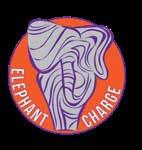
In September, 26 teams of cars and motorbikes were challenged with a demanding course of tough terrain over the shortest distance. The event raised nearly US$200,000. The Elephant Charge supports CSL’s important human-wildlife conflict mitigation and community programmes.

Over the last 10 years, the Tusk Conservation Awards have provided a platform to spotlight the work of conservation leaders and wildlife rangers in Africa. To help mark this milestone, award alumni from across Africa came together in November to celebrate at Hampton Court Palace in London. Rachel, a 2016 finalist, and Benson, winner of the 2019 Wildlife Ranger Award, attended the ceremony. Rachel and Benson participated in a round-table discussion at St James’s Palace the following day.

In 2021, Rachel was accepted into the first cohort of Women for the Environment (WE) Africa, along with 19 women from across Africa. WE Africa strives to put women at the heart of transforming Africa’s environmental movement. As the first cohort was taking place in the middle of the Covid-19 pandemic, interactions throughout the year were conducted online. In
2022, the first WE Africa in-person retreat took place over three days at the stunning Meno a Kwena Camp in Botswana where the fellows, facilitators and brains behind WE were able to meet for the first time. The retreat was one of the highlights of the one-year Leadership journey with WE Africa. It was a time to connect and engage with fellow cohort members and participate in meaningful exercises to aid and strengthen the WE Africa alumnae. This event created a new and exciting idea that will be shared in 2023.

We are proud to employ 120 full-time employees - 93 community scouts (including 18 female scouts), 10 senior management team members, and a further 17 support staff. We also provide monthly volunteer stipends to 13 community data collectors for HWC assessments and to 30 chilli patrollers who deter crop-raiding elephants from entering farmers’ fields. Each CSL team member is passionate about wildlife. We thank each of them for their commitment and dedication to CSL’s mission to protect the wildlife and habitat of the South Luangwa ecosystem.


CSL’s accounts are managed by Nicholas Tamba, Finance Manager, and two accountants, Allan Ndhlovu and Vincent Tembo. Over the last three years, CSL has upscaled its efforts to curb poaching and illegal wildlife trade. These efforts require more resource and therefore funding. To ensure more efficient and realtime reporting, we have improved our accounting system and procedures by migrating from Quick Books to Palladium Accounting. In 2022, CSL generated an income of US$2.6M from the Luangwa Conservation and Community Fund (LCCF), donors and grants. The majority of this funding was deployed to CSL’s anti-poaching activities which includes the training of our scouts, HWC mitigation efforts and aerial support.

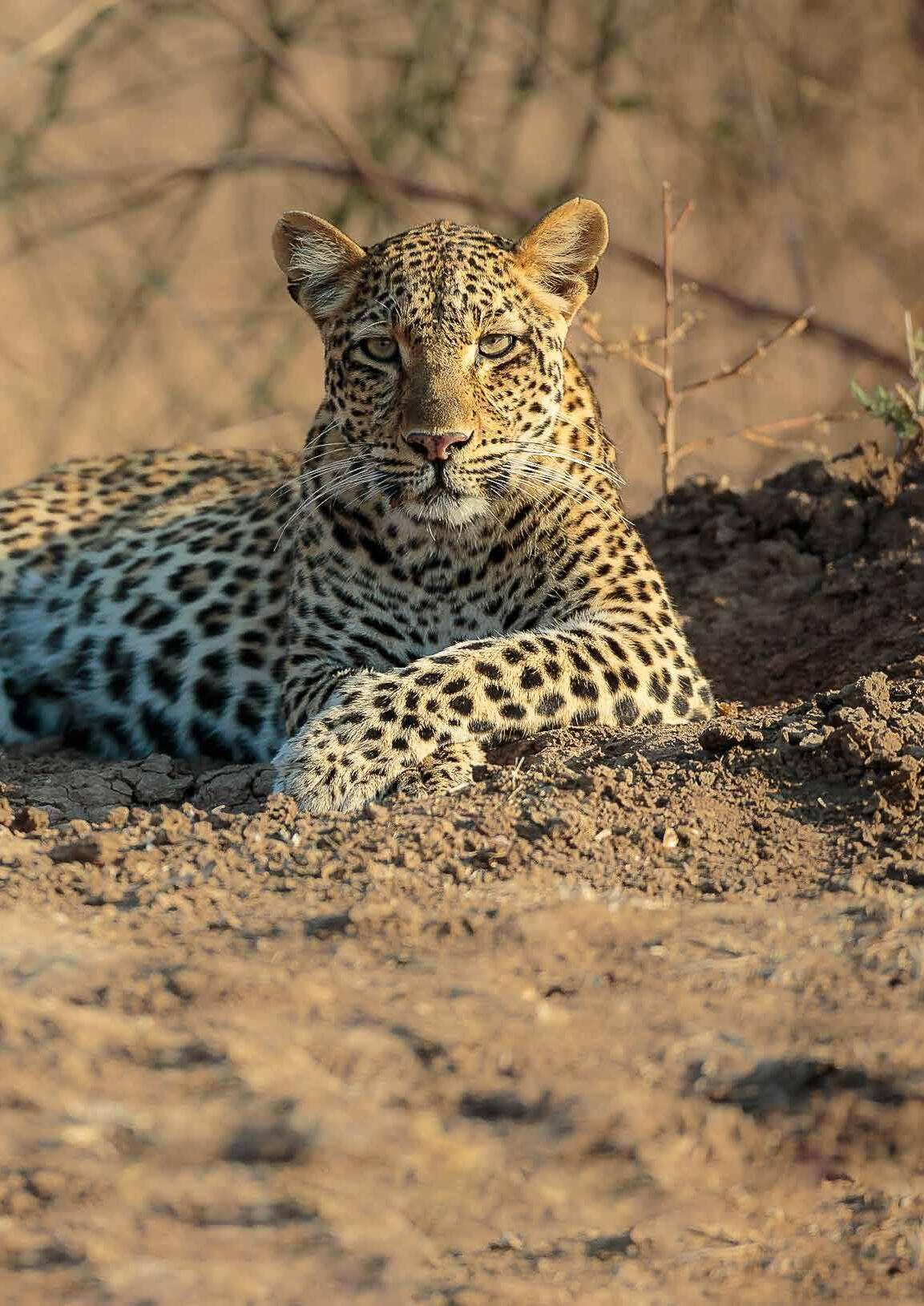

We are immensely grateful to Zambia’s Department of National Parks and Wildlife for their long-term partnership and willingness to continue working closely together for the joint mission of conserving the wildlife of South Luangwa. We would also like to thank the following donors and partners for their invaluable support of our work in 2022.





















$50,000 - $99,999 $10,000 - $49,999 $5,000 - $9,999
$1,000 - £4,999
Alec Lindsay
Allan & Jeanne larson
Andrew Conbo

Elizabeth Touma
Frank Petrus
Greta Utecht
Jacqui Harris
Jennifer Mayle
Keith Grundy



Patrick Bentley
Photography






Pierre Rippstein
Robert Sansom
Virginia Kubic
Acacia Parker
Alysa Emden
Anne Sibbald
Bermagui Veterinary Clinic
Caitlin Costa
Carol Van Bruggen
Carole Cotter
Caroline Haines
Chris Brown
Christèle Teilla
Christina Gullberg
Christopher Barlow
Community Veterinary Clinic

Dan Zhang
David Bryan
David Picus
Diane Boteler
Edward Reder
Elise Robinson-Phillips
Emilia Leese
Emily Jacobs
Emma Smithson
Gail Edwardson
Gareth Jones
Gary Levy
Gary Nichols
Gero Heine
Gid Carr
Gillian Greenway
Gisela Lancac
Gwynn Morris
Helga Bintner-Mehlert
Hilliard Society of Miniaturists
Ian Shenton
Isabelle Defourny
Jacob Holt
Jacques Zacnon
Jay Hersh
Jean-Michel Pavy
Jennifer Hall
Jess Ridley Art
John Miller
Josh Earhart
Judith Foord
Justin Drummond
Katherine Ring
Kerri Stoehr
Linda & Conan Butcher
Lydie Delineau
Marco Kost
Marcus Panos
Mari Passananti
Martha Girolami
Mathew Kemp
Mel Crichton
Michael Thornton

Njobvu Safaris
Paula Fitzpatrick
Peter Hayton Fine Art
Peter Lemon
Petra Jordan
Ravi Jain
Riki-Taavi Nurm
Ruth Wise
Schwab Charitable
Sheda Morshed




Simone Anzboeck
Sonja Lockyer
Stefanie Mangold
Stephanie Reeves
Steven Segall
Susan Horsewood-Lee
Th. L. van den Hoonaard
Tom Savage





































Chairman – Adrian Carr
Secretary – Edward Selfe
Treasurer – Carol Van Bruggen
Trustee – Graph Evans
Trustee – Nick Aslin
Trustee – Derek Shenton
Trustee – Simon Barnes
Trustee – Chris Breen
Trustee – Aisling Ryan
Trustee – Shadrack Nkhoma
Trustee Emeritus – Anna Tolan
Trustee Emeritus – Jake da Mottaa

For more information on how to support CSL’s work, please scan the QR code below.

